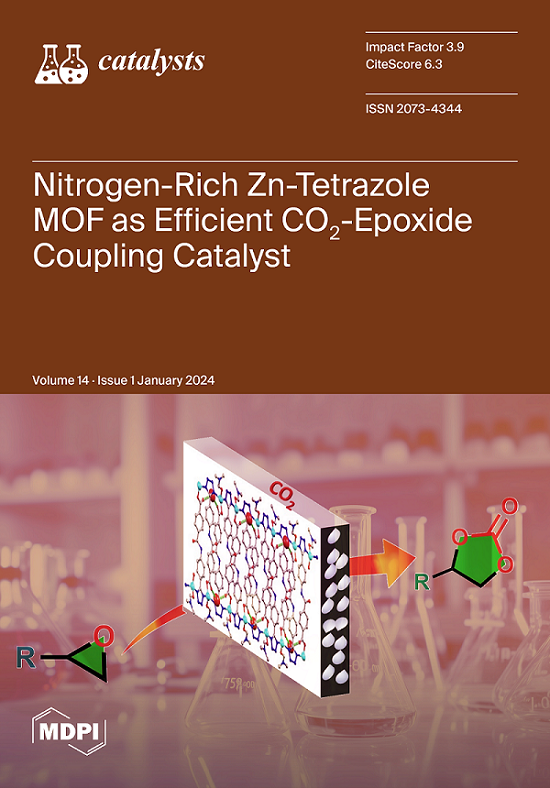低指数 Co3O4 表面上的 2-丙醇活化:分子动力学模拟比较研究
IF 3.8
3区 化学
Q2 CHEMISTRY, PHYSICAL
引用次数: 0
摘要
我们利用 ab initio 分子动力学模拟比较了在干燥条件下 2-丙醇在低指数 Co3O4 (111)、(110) 和 (001) 表面上的活化情况。对每种表面的 B 端上将 2-丙醇分解为 2-丙氧基的薄膜的热分解和表面辅助分解进行了监测和分析。研究表明,Co3O4 的活性顺序为 (111) > (110) > (001)。在所有表面上,Co3+ 都是吸附位点。在 B 端(111)表面,观察到所有 2-丙醇分子在界面上完全解离,并伴随着表面预羟基化后的 Mars-van Krevelen 型机制。活性区域显示出 Co3+-O2-propoxide-Co2+ 桥,其中配位不饱和的 Co2+ 离子也参与了 2-丙醇的吸附和分解。在(110)表面,2-丙醇的解离是由温度驱动的,温度激活了表面的两倍配位不饱和氧原子。几乎不发生解离的 (001) 表面活性最低。在所有表面的模拟条件下都没有观察到丙酮的形成。本文章由计算机程序翻译,如有差异,请以英文原文为准。
2-Propanol Activation on the Low Index Co3O4 Surfaces: A Comparative Study Using Molecular Dynamics Simulations
We used ab initio molecular dynamics simulations to compare the activation of 2-propanol on the low index Co3O4 (111), (110) and (001) surfaces in dry conditions. The thermal and surface assisted decomposition of a film of 2-propanol to 2-propoxide on the B-termination of each surface was monitored and analyzed. The investigations suggest an activity order of Co3O4 (111) > (110) > (001). On all surfaces, the Co3+ serves as an adsorption sites. On the B-terminated (111) surface, full dissociation of all 2-propanol molecules at the interface is observed, accompanied by a Mars-van Krevelen-type mechanism upon pre-hydroxylation of the surface. The active regions show Co3+–O2-propoxide–Co2+ bridges where the coordinatively unsaturated Co2+ ions also participate in the adsorption and decomposition of 2-propanol. On the (110) surface, 2-propanol dissociation is driven by temperature, which activates the two-fold coordinatively unsaturated surface oxygens. The (001) surface on which almost no dissociation occurs is the least active. No formation of acetone is observed in the simulations conditions on all surfaces.
求助全文
通过发布文献求助,成功后即可免费获取论文全文。
去求助
来源期刊

Catalysts
CHEMISTRY, PHYSICAL-
CiteScore
6.80
自引率
7.70%
发文量
1330
审稿时长
3 months
期刊介绍:
Catalysts (ISSN 2073-4344) is an international open access journal of catalysts and catalyzed reactions. Catalysts publishes reviews, regular research papers (articles) and short communications. Our aim is to encourage scientists to publish their experimental and theoretical results in as much detail as possible. Therefore, there is no restriction on the length of the papers. The full experimental details must be provided so that the results can be reproduced.
 求助内容:
求助内容: 应助结果提醒方式:
应助结果提醒方式:


